WANT!
The Legend of Zelda: Link's Awakening DX Review Rewind
|
|
See PixlBit's Review Policies

On 05/27/2011 at 02:42 PM by Matt McLennan Want to know which 2-D Zelda is the best Zelda? It isn’t Link to the Past! (WARNING: POSSIBLE STORY SPOILERS!!) |

Get this eShop Virtual Console title at launch.
Here’s a little shocker for you: my first Zelda game was Ocarina of Time. I didn’t get into Nintendo’s other big franchise until Zelda made the jump to the Nintendo 64 in 1998. After experiencing Link’s first adventure in 3-D, I wanted more Zelda. I learned about the previous Zelda titles in the franchise, thanks in part to the awesome player’s guide Nintendo put out, and my need for more Zelda was quickly fixed with the arrival of Link’s Awakening DX. The “DX” part standing for “Deluxe”.
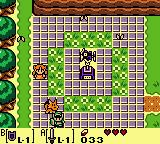
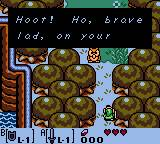
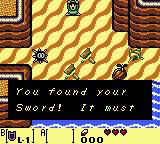
In the Game Boy Color era, Nintendo had this little thing going on with re-releasing Game Boy games in 8-bit color. Wario Land 2 was the first, and Link’s Awakening DX followed shortly thereafter. Link’s Awakening DX, in a sense, was special. Firstly, it was the second Zelda game I experienced after Ocarina of Time, and secondly, it had some new content whereas Wario Land 2 was a straight up port with a color makeover. Did I even care that Link’s Awakening was a Color re-release? The answer is a flat “no”. I had never played the black and white Link’s Awakening in 1993. I was too busy playing Star Fox.
As you may have noticed with the review score, I gave this game a perfect five out of five. Why did I do that, you ask?
BECAUSE THIS GAME IS AWESOME.
Yes, I love Link’s Awakening. It is one of my favorite Zelda games and the only Zelda game besides Ocarina of Time that has what I consider the second best story out of the entire series (after Ocarina of Time). And I will gladly share my opinion on why I like it so much.
Awaken the Wind Fish
In terms of its aesthetic and game design, Link’s Awakening is what happens when you take the first NES Zelda and sprinkle it with a bit of Link To The Past. While the later Oracle games and Minish Cap expanded on the design set with Link’s Awakening, it doesn’t mean that Link’s first handheld outing was flawed. In fact, personal opinion not-withstanding, Link’s Awakening took many of the first NES Zelda’s game design limitations and improved them; the sword swings at an angle, you can set two different items to the A and B buttons and Link can move in eight directions. Even though the overworld and dungeons were limited to a set screen (like Zelda 1), and the Game Boy’s screen is much smaller than a television, the island of Koholint felt much more alive. No matter where you went, no two screens ever felt the same.

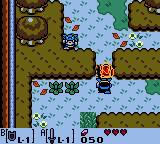
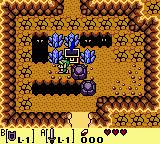
The real star of any Zelda game has always been the dungeons, and Link’s Awakening did not disappoint in this area. Each dungeon was set around its name, hence its shape would reflect the layout of the dungeon. A good example? The Key Dungeon, with the first and basement floor laid out like a big key and little key respectively. While the basic Zelda exploration remained mostly unchanged from Link To The Past and Zelda 1, Link’s Awakening put more emphasis on exploring the overworld before tackling a dungeon. Some of the dungeons required keys, while others were event driven. At the end of each dungeon, you fought a boss. Unlike recent Zelda games, that which pretty much required you to use each dungeon’s the special item you found in each dungeon to defeat the boss, Link’s Awakening followed Link To The Past’s approach onto boss battles in that you had to experiment in finding the boss’s weakness… sometimes. A couple of the bosses in Link’s Awakening did require the dungeon item to be used, but it wasn’t as common as in, say, Twilight Princess. (Except the Face boss, which was the lamest boss in any Zelda game. The Oracle games demoted him to a mini-boss, thankfully.)
However, would you believe me if I said that the game’s actual star was its story?
Marin, the Wind Fish, and… Island Genocide?
Koholint Island was the first overworld that was not a part of Hyrule, but in terms of NPC interaction and story, it easily stands beside Ocarina of Time and Majora’s Mask in terms of story design. Most of this is thanks to the mythos of the Wind Fish and Marin, and the game’s main female protagonist. While Koholint is home to quite a diverse array of NPCs, interacting with Marin felt far more emotional than any of the times I interacted with Saria, Malon, Ruto and Zelda in Ocarina of Time. Her dreams of leaving the island and the side-quest a quarter of the way into the game where you escorted her to the Animal Village were charming.
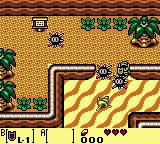
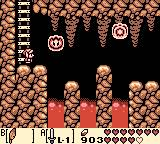
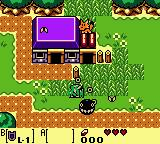
Yet for all its bright, cheerful graphics and characters, Link’s Awakening has a back story darker than that of Majora’s Mask. The entire plot of Link’s adventure is that he’s shipwrecked on Koholint Island, and the only way to get off the island is to awaken the Wind Fish. Yet as you get further into the game, you slowly learn the truth from one frantic boss and a stone tablet: Koholint Island doesn’t really exist, and awakening the Wind Fish erases everyone from existence. Koholint is only the Wind Fish’s dream, and once the dream ends, so does the existence of everyone inhabiting the island will disappear.
All of this is thanks to one person: Yoshiaki Koizumi. You may know Koizumi better for being the director of the first Super Mario Galaxy, and the story writer who made that amazing Rosalina back-story. In fact, the entire mythos of Link To The Past was Koizumi’s doing, and it's a bit of a shame his writing skills have to be limited; Koizumi’s writings are the best within Nintendo right now.
Final Thoughts
June 7th is the release date for the Nintendo eShop, and launching with it is Link’s Awakening. Regardless of its pricing (and if the shopping experience is any better than seen on the DSi and Wii), this is a must-buy title. Get it.







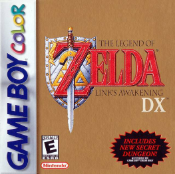


Comments